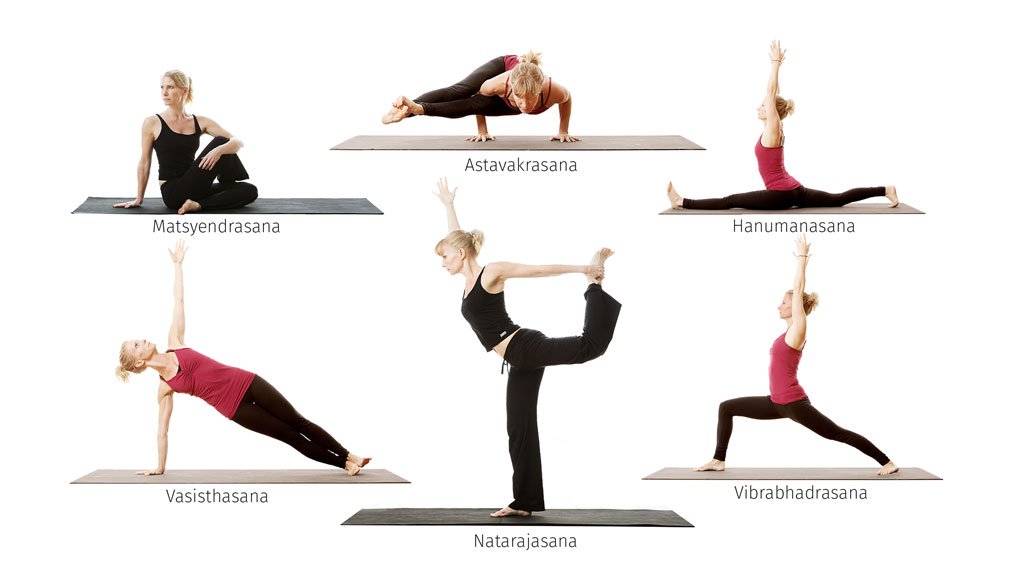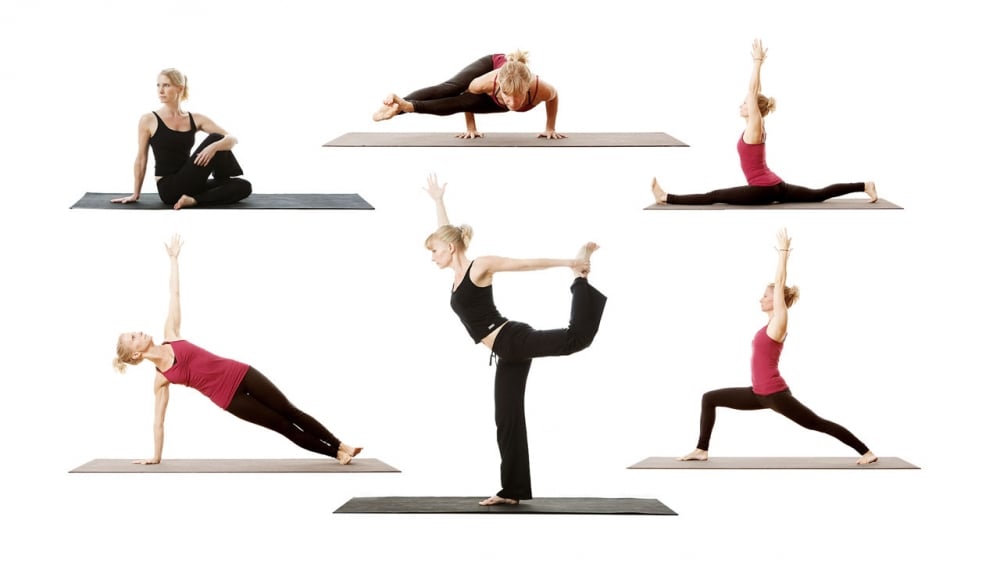Whilst many of the yoga postures we see today are influenced by nature, inspired by trees (Vrksasana), the moon (Ardha Chandrasana), or even birds (Bakasana), there are also postures which depict the deities revered in Yogic and Hindu culture.
As a way of connecting to, revering and paying respect to deities, many yoga postures represent not just what the deity looks like, but also everything they stand for. As we practise the posture, we put our focus on the energy and essence of the deity and look to embody their qualities.

Here are a few you may be familiar with:
Hanumanasana
Otherwise known as ‘the splits’; this is one posture that really does require dedication and the patience of a saint to master. The monkey god Hanuman represents devotion, selfless service, dedication, and power. The physical posture represents his ability to leap great distances, depicted in the battle between Rama and Ravana in the Ramayana when he leapt from India to Lanka in order to comfort Sita. Hanuman was so loyal towards Rama, that when offered a reward for his bravery and dedication to Rama and Sita, he asked only to be able to continue to serve them.
- Try it in class – Hail to Hanuman – Sandra Carson / Level 1/2 / 1:08min
Natarajasana
The cosmic dancing form of Shiva is a representation of the deity in one of his most well-known forms. Nata means ‘dancer’, and Raja means ‘royal’ or ‘king’, so you’ll often hear this asana referred to as ‘king of the dancers’ too. Shiva is pictured in many forms, and this particular form represents the dance of the universe, the fluctuating, changing, ups and downs, and whirlings of life.
One of the most widely used forms of expression and cultural celebration is dance, and with this cosmic dance, Shiva symbolises the dynamism of life, and the rhythm and cycles of nature. As in life, whilst the external posture may be full of movement and much wobbling when we practise, it requires a still, calm mind in order to stay balanced.
- Try it in class – Dance of Shiva – Sandra Carson / Level 1/2 / 52 mins
Virabhadrasana
The powerful warrior pose is indeed a representation of power and strength, however, this warrior is much more dedicated to peace than war. The word Vira is the Sanskrit word for ‘hero’, and bhadra means ‘friend’. In this sense, the warrior is all about protection and is someone to call upon in times of need.
There are many Yogic tales which include battles, and the story of the warrior is followed throughout the Bhagavad Gita. Virabhadra is said to have been created from a lock of Shiva’s hair that he tore out in grief when his wife Parvati died, and so he carries with him Shiva’s power – and quite possibly his fiery temper too!
- Try it in class – Fifty Shades of Warrior – Anat Geiger / Level 1/2 / 27 mins
Vasisthasana
A revered and influential sage in Hinduism, Vasistha is one of the seven great Rishis. He is known to have written part of the sacred text, the Rig Veda. Vasistha translates as ‘richest’, ‘most excellent’, ‘wealthy’, or ‘best’. The posture (also known as ‘side-plank’ in English) certainly requires an excellent sense of strength and balance.
Many mythological stories speak of Vasistha, including the tale of his ownership of a magical cow named Nandi, who could grant her owner whatever they wished for.
- Try it in class – Balance and strength – Francesca Giusti / Level 1/2 / 41 mins
Matsyendrasana
Seated spinal twist – often referred to as ‘Ardha Matsyendrasana’ – is a representation of Matsyendra, or ‘Lord of the Fish’. This posture is actually named after a real man who was born around the 10th Century CE. He is revered by Buddhists in Nepal, who consider him to be an incarnation of Avalokiteshvara, the boddhisatva of compassion.
Legend had it that Matsyenrdra was born under inauspicious circumstances and was therefore thrown unwanted into the ocean. After being swallowed by a giant fish, the fish travelled down to the bottom of the ocean. Here, in theor hideway under the sea, Shiva was busy revealing the mysteries of yoga to his wife Parvati. After staying in the belly of the fish for 2 years, Matsyenrdra emerged full of the wisdom he had heard from Shiva.
- Try it in class – Bye bye stress, hello relaxation – Esther Ekhart / All levels / 57 mins
Astavakrasana
Another revered Vedic sage, Astavakra translates as ‘eight bends’, referring to the eight physical handicaps he was born with. His story begins in the womb, where he would hear his father reciting the Vedas, however his father would often make mistakes. One day, when Astavakra couldn’t bear to listen to his father embarrass himself by reciting the sacred texts incorrectly, he called out from the womb and corrected him.
Enraged (and probably a little embarrassed), Astavakra’s father cursed the child, so that he would be born with eight bends in his body. When born, Astavakrasana was incredibly crippled and pained, yet he was full of knowledge and wisdom, and took the long and difficult journey to King Janaka’s court to meet with other knowledgeable and important sages and seers.
When he finally arrived, all the sages and seers – looking upon the boy’s deformities – laughed at him and refused to give him respect. Astavakra explained to the king that he was disappointed with his reception, and expecting wise men, felt he was met with shoe-makers. The king was confused by his explanation, and so Astavakrasana told him;
“They see only skin. They do not see the atma, the soul. They have no realization of the soul and the Supreme Soul. They merely see the surface, and base their judgments solely on this. This is the occupation of a cobbler, who is always saying: ‘This skin is good; that skin is not good. This one is smooth; that one is rough.’ Coming here as been a waste of time.”
After hearing this, the King bowed to Astavakra, and vowed to be his student.
As a difficult physical posture, Astavakrasana possibly teaches us that whatever difficulties we face, with strength, perseverance, compassion, courage and patience, we can overcome them:
If you wish to be free,
Know you are the Self,
The witness of all these,
The heart of awareness.
Set your body aside.
Sit in your own awareness.
You will at once be happy,
Forever still, Forever free.
You are everywhere,
Forever free.
If you think you are free, You are free.
If you think you are bound, You are bound.
Meditate on the Self.One without two,
Exalted awareness.
~ Ashtavakra Gita 1.4–14, Translator: Thomas Byrom
- Try it in class – Astavakrasana tutorial – MacKenzie Miller / Level 2 / 20 mins
The Deity Series with Sandra Carson
EkhartYoga members can take a closer look at the link between the practice of Hatha yoga and the Deities of India. Learn about the different Gods or Goddess of India in this mini-series with Sandra Carson.

